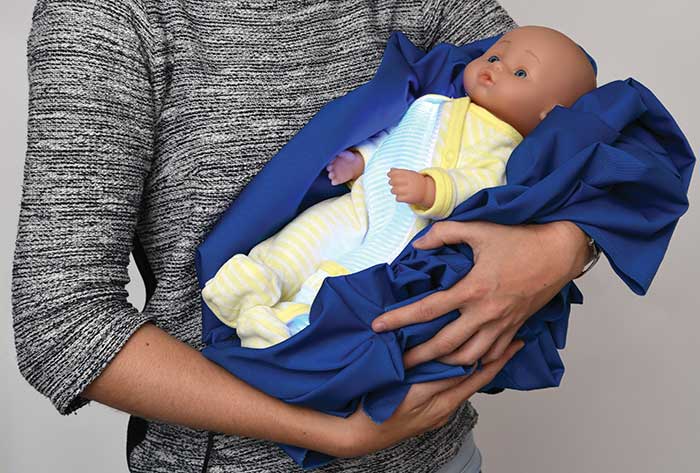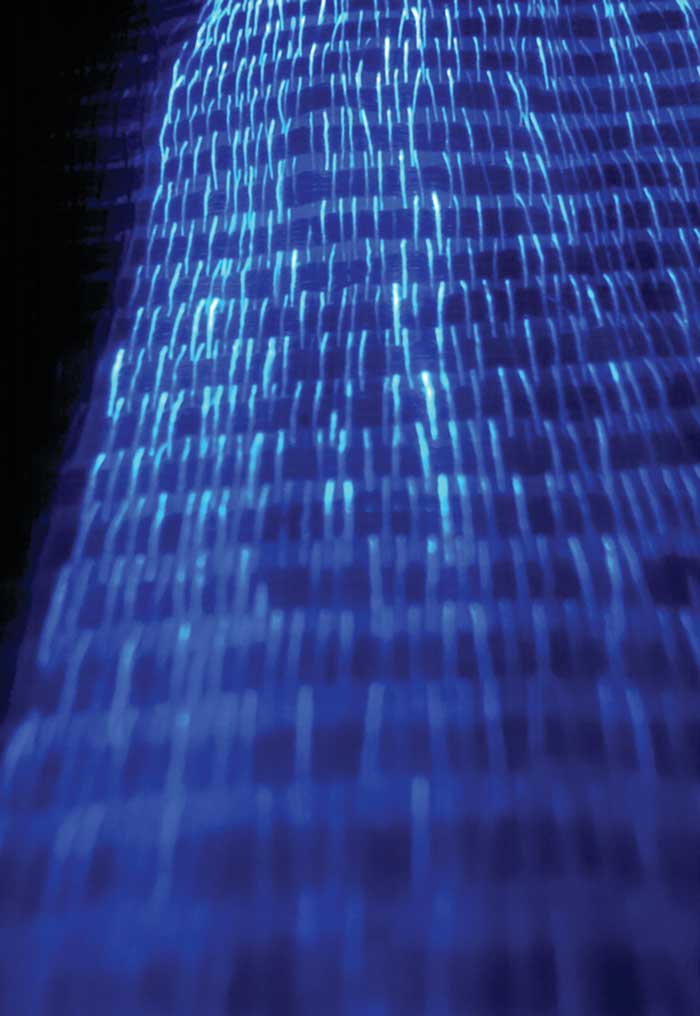Infant jaundice is common, as babies’ metabolisms are not very resilient during the first few days after birth. With jaundice, bilirubin accumulates in large amounts, causing visible yellow tinting of the skin. Irradiation with blue light intensities of 30 µW/cm2 in an incubator transforms the toxic bilirubin into a soluble form that can easily be removed by the infant’s immature liver.
Researchers at the Swiss Federal Laboratories for Materials Science and Technology (Empa) in Dübendorf, Switzerland, have improved the currently not-so-child-friendly procedure — which involves babies being naked and alone in an incubator with their eyes covered for protection — by developing illuminated pajamas that turn the treatment into a safer, more pleasant experience.

For future clinical applications, the pajamas will only emit their blue light inward, directly onto the child’s skin. Courtesy of Empa.
The Empa material researchers created what they call photonic textiles, with optically conductive fibers woven into them. Battery-operated LEDs serve as the light source for the light-conducting threads. Together with conventional thread, the optical fibers are made into a satin material that distributes the light supply evenly throughout the fabric.
Empa researcher Luciano Boesel told Photonics Media that the LEDs and optical fibers are safer than traditional bilirubin lights, even though the power of the light is ultimately the same needed to degrade the bilirubin in the body.
“If it is too low, the process is too slow or does not happen at all. But in our case, we can design the pajama so that only the skin — or even only some parts of the skin — [is] irradiated,” said Boesel. “This makes it safer in the sense that the eyes will not be endangered. Moreover, as the textile is in close contact with the body, the nominal power can be lower than in the typical blue boxes, where the light sources are several centimeters away from the baby.”

Where polymer optical fibers are woven into the fabric and connected to LEDs, the fabric shines at a therapeutic wavelength. Courtesy of Empa.
With a diameter of around 160 µm, the dimensions of the optical fibers match that of regular threads. Boesel’s team bent the threads so that the blue light stays in the therapeutic wavelength range of around 470 nm and is emitted onto the baby’s skin, rather than staying in the fabric.
Photonic textiles woven in this manner can be made into a romper or a sleeping bag, so the little patient is clothed and still can be held and fed. Unlike treatment in the incubator, where the light shines on the infant’s face, the shortwave radiation of the illuminated pajamas doesn’t reach the baby’s sensitive eyes. The prototype illuminated pajamas are washable, tolerated well by the skin and suitable for everyday wear.
The Empa researchers are looking for companies that would like to develop the illuminated pajamas into a final product. They hope their photonic textiles via phototherapy can be a cozy treatment option for babies with jaundice.